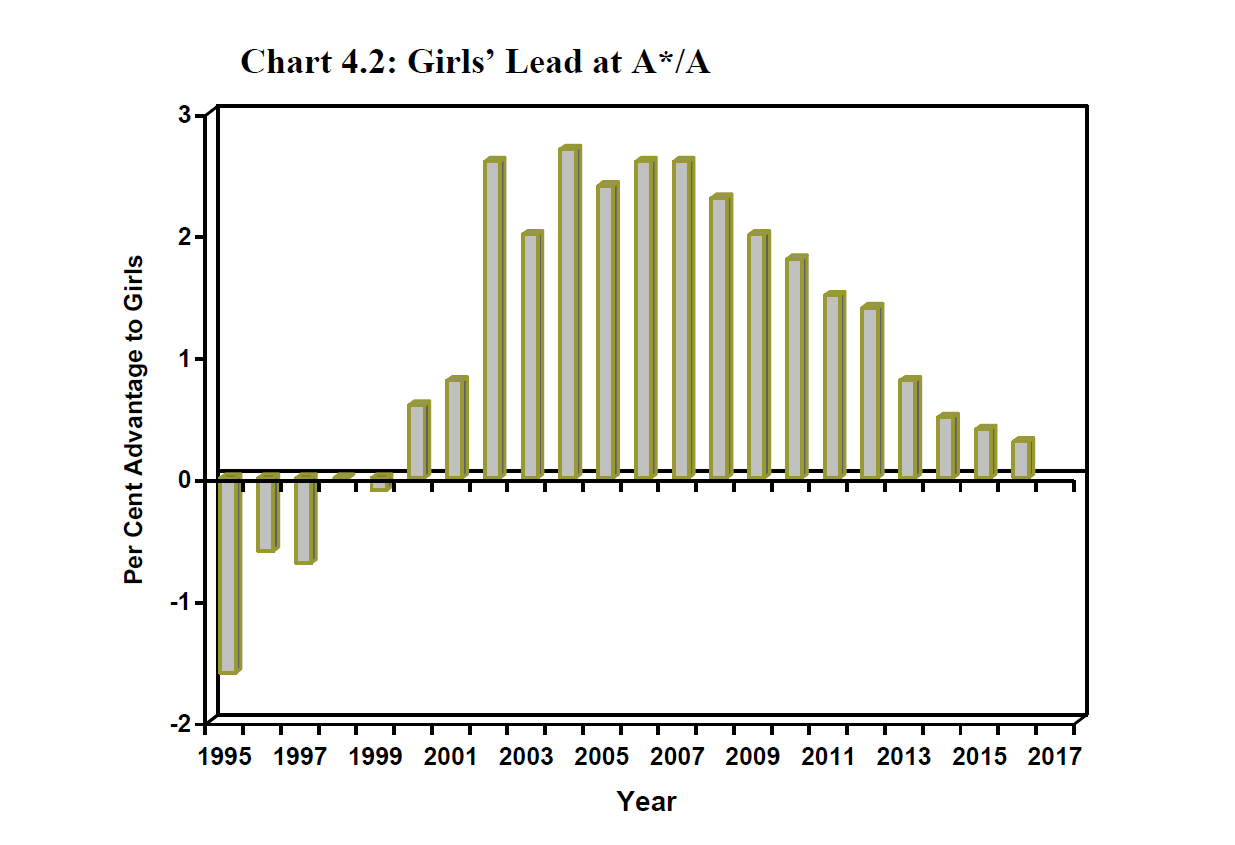Boys have overtaken girls to receive more top A-level grades this year, reversing a trend that’s lasted for nearly two decades.
More than one in four boys received an A* or A grade in England this year – increasing from 25.8 per cent last year to 26.6 per cent ths year.
Meanwhile, top grades among girls remained static at 25.9 per cent, meaning the gap between the two increased.
Boys have previously led the way on A* grades but it is the first time they have received the majority of A* and A grades.
In the 13 subjects which this year had reformed exams, all sat at the end of the course, top grades fell overall – but boys saw a less dramatic decline than girls.
The proportion of girls achieving A* or A grades in reformed subjects fell by 1.1 points, whereas boys dropped by just 0.2 points.
The data seems to support predictions made by a leading academic that the reforms would see boys’ performance surge.
Research released last week by Professor Alan Smithers, from the University of Buckingham’s Centre for Education and Employment, used trends from the last time A-levels were linear at the start of the millennium to predict an improvement in boys’ performance this year.
Prof Smithers noted in his research that although girls actually achieved more A*s than boys in 27 out of 35 subjects last year, boys were way ahead in subjects such as maths, which is not affected by this year’s reforms and which produces “by far the most” A* grades.
According to his research, which analyses UK-wide results rather than grades just in England, girls have held the advantage over boys in terms of top grades since 2000.
This year, 42.9 per cent of boys achieved A* and A grades in maths, up from 42.4 per cent last year – and 2.1 per points higher than girls.
The Joint Council for Qualifications, which represents the exam boards, has insisted that it is too early to draw conclusions from the reformed A-level results in their first year.
A similar pattern has been seen in Wales, where different reforms have taken place, a representative pointed out.
“It will be interesting, as we continue to progress through the reform timetable, to see if this pattern becomes a trend and the gender performance gap is closed at A-level,” they said.
Mark Bedlow, director of regulation at OCR, said boards had noticed a narrowing gap at higher grades between boys and girls this year, even though subject choices between the sexes remained “relatively static”.




Your thoughts